Pump Station 1 Booster Pump Piping Incident
Unified Command



Whenever there is an incident involving more than one agency with jurisdiction, a joint command arrangement, called the Unified Command is implemented. This webpage provides a compilation of general information, reports, press releases, maps and relevant links meant to aid members of the Unified Command and inform the public during a response. Not all information provided here has been jointly approved or endorsed by every member of the Unified Command.
- Location
- TAPS Pump Station 1, Prudhoe Bay
- Time/Date
- 8:46 a.m., January 8, 2011
- Spill Id
- 11399900801
- Product/ Quantity
- The volume of oil released into the building and recovered prior to the January 11 restart is estimated at 1,776 gallons (42.2 barrels). The volume of oil recovered from the building since the January 11 restart is approximately 11,130 gallons (265 barrels). No additional oil has been observed leaking from the pipeline.
- Cause
- At 8:16 AM, January 8, crude oil was discovered in the booster pump basement at Pump Station 1 of the Trans Alaska Pipeline System (TAPS). The Operations Control Center in Anchorage shut the pipeline down just before 8:50 AM. The leak source appears to be from a below-ground pipe that leads to the basement of the booster pump building. The pipe is encased in concrete. Oil flowed in the small space between the walls of the pipe and the concrete, through the wall of the building into the basement. Alyeska employees and State and federal agencies are jointly responding to the incident. Engineers developed a plan to bypass the affected piping in order to safely restart the pipeline and proceed with repairs to the leak. There are no injuries or apparent impacts to the environment as a result of this incident.
ADEC Situation Reports
- 01/21/2011 (PDF 114K)
- 01/20/2011 (PDF 155K)
- 01/19/2011 (PDF 48K)
- 01/18/2011 (PDF 115K)
- 01/17/2011 (PDF 133K)
- 01/16/2011 (PDF 247K)
- 01/15/2011 (PDF 446K)
- 01/14/2011 (PDF 196K)
- 01/13/2011 (PDF 153K)
- 01/12/2011 (PDF 32K)
- 01/11/2011 (PDF 170K)
- 01/10/2011 (PDF 100K)
- 01/09/2011 (PDF 100K)
- 01/08/2011(PDF 32K)
Unified Command Press Releases
- 01/18/2011 -- Press Release (PDF 8K)
- 01/17/2011 -- Media Advisory (PDF 10K)
- 01/17/2011 -- Press Release (PDF 13K)
- 01/15/2011 -- Media Advisory (PDF 50K)
- 01/13/2011 -- Press Release (PDF 20K)
- 01/11/2011 -- Media Advisory (PDF 11K)
- 01/09/2011 -- Press Release 1429 (PDF 19K)
- 01/08/2011 -- Press Release 1428 (PDF 17K)
Fact Sheets
- 01/17/2011 -- UC Fact Sheet 10 (PDF 16K)
- 01/16/2011 -- UC Fact Sheet 9 (PDF 16K)
- 01/15/2011 -- UC Fact Sheet 8 (PDF 27K)
- 01/14/2011 -- UC Fact Sheet 7 (PDF 27K)
- 01/13/2011 -- UC Fact Sheet 6 (PDF 27K)
- 01/12/2011 -- UC Fact Sheet 5 (PDF 32K)
- 01/11/2011 -- UC Fact Sheet 4 (PDF 86K)
- 01/10/2011 -- UC Fact Sheet 3 (PDF 83K)
- 01/09/2011 -- Alyeska Fact Sheet 2 (PDF 25K)
- 01/08/2011 -- Alyeska Fact Sheet 1 (PDF 25K)
Incident Updates
Click date to show/hide update
- The Trans Alaska Pipeline System resumed operations at 10:18 a.m. Work crews successfully completed the bypass pipeline leading from the booster pump building to the metering building at 3:40 a.m.
- The reintroduction of crude oil into the pump station piping system began at 5:50 a.m. By 4:00 p.m. the level of throughput in the pipeline had gradually increased to above 500,000 barrels a day, and the flow rate will continue to rise this evening until it reaches normal levels.
- With the assurance of pipeline flow to Valdez verified, at 2:50 p.m. APSC allowed North Slope producers to return to 100% production levels, after having been restricted to levels as low as 12%. Storage tanks at the pump station reached the 36-foot level before oil began to be reintroduced into the pipeline; the normal maximum operating level is 42 feet.
- FLIR overflights are planned to continue on a nightly basis.
- The Unified Command plans to stand down at 6:00 a.m. tomorrow morning, January 18. Alyeska's incident command system will remain in place until crude oil temperatures in the pipeline normalize. At the present time, there are more than 600 people responding to the incident, including 375 people at Pump Station 1.
- ADEC will assign a project manager to continue to actively manage the state's response and follow-up to this incident until the completion of all necessary oversight and investigation.
- The Trans Alaska Pipeline System resumed operations at 10:18 a.m. Work crews successfully completed the bypass pipeline leading from the booster pump building to the metering building at 3:40 a.m.
- The reintroduction of crude oil into the pump station piping system began at 5:50 a.m. By 4:00 p.m. the level of throughput in the pipeline had gradually increased to above 500,000 barrels a day, and the flow rate will continue to rise this evening until it reaches normal levels.
- With the assurance of pipeline flow to Valdez verified, at 2:50 p.m. APSC allowed North Slope producers to return to 100% production levels, after having been restricted to levels as low as 12%. Storage tanks at the pump station reached the 36-foot level before oil began to be reintroduced into the pipeline; the normal maximum operating level is 42 feet.
- FLIR overflights are planned to continue on a nightly basis.
- The Unified Command plans to stand down at 6:00 a.m. tomorrow morning, January 18. Alyeska's incident command system will remain in place until crude oil temperatures in the pipeline normalize. At the present time, there are more than 600 people responding to the incident, including 375 people at Pump Station 1.
- ADEC will assign a project manager to continue to actively manage the state's response and follow-up to this incident until the completion of all necessary oversight and investigation.
- Alyeska Pipeline Service Company (APSC) is in the process of finalizing procedures for shutting down the TAPS and installing a bypass pipeline between booster pump 1 and the TAPS input piping in the metering building at Pump Station 1. The Unified Command has agreed that operation of the TAPS may continue until these preparations are complete.
- Shutdown is targeted for Friday night, January 14, dependent upon equipment arrival and preparatory progress. APSC estimates the shutdown will last 36 to 48 hours. The first shutdown, following the discovery of the leak, lasted 84 hours.
- Bypass pipeline materials are being fabricated in Fairbanks and flown to the North Slope for delivery at Pump Station 1. Workers at the pump station have removed snow and placed scaffolding along the bypass pipeline route in preparation for construction.
- Staging of cold restart equipment is complete at Pump Stations 3 and 5 and continues at other pump stations. ADEC personnel again visited pump stations and valve sites on January 13 to observe cold restart preparations.
- Following the initial spill cleanup on January 8, responders constructed a temporary containment tank in the basement of the booster pump building to collect leaking oil at the seep site. With the temporary TAPS restart shortly after 9:00 PM on January 11 (see Sitrep #4), oil began flowing again through the suspect booster pump discharge piping. Flow from the seep has appeared to remain steady since the restart, with response crews recovering approximately 11, 214 gallons (267 barrels) of oil from the tank, which will be re-injected into the TAPS line at a later date.
- At the time of the leak detection, two pipeline inspection/cleaning gauges (PIGs) were making their way down the pipeline. The restart of oil flow on January 11 has allowed the PIGs to move down the pipeline to locations suitable for their sequester: one at Pump Station 8; the other at the Valdez terminal. The oil in the pipeline cooled down during the 84-hour flow stoppage, and capturing the PIGs ensures that they cannot push along any subsequent ice or wax buildup, which could damage pump station equipment.
- Airborne crews have made several overflights of the entire pipeline with forward-looking infrared (FLIR) imaging equipment to look for thermal evidence of oil leaks; no actual or potential leak sites have been identified.
- More than 550 people across the state, including those from industry and federal and state agencies, are involved in the response to this incident. APSC will continue to prepare for the planned TAPS shutdown and for the contingency of a cold restart thereafter. Personnel will maintain oil recovery from the booster pump. Monitoring of soil gas probes around the booster pump building will be included in spill detection efforts as activity around the building permits.


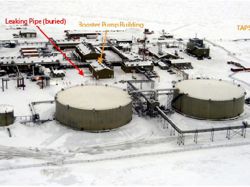




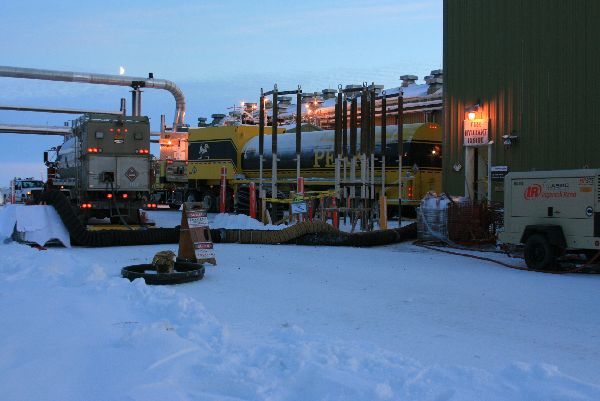
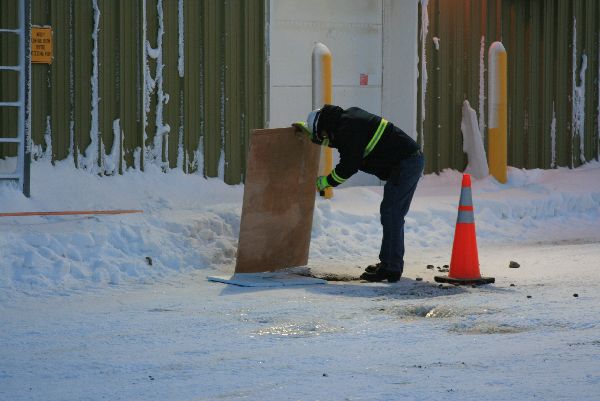



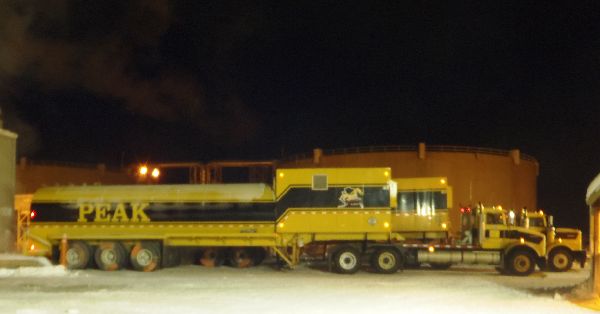
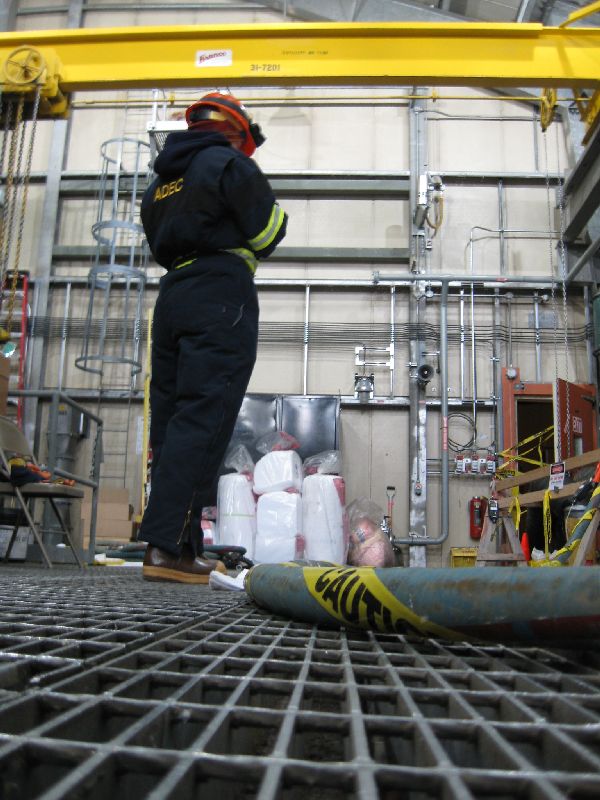
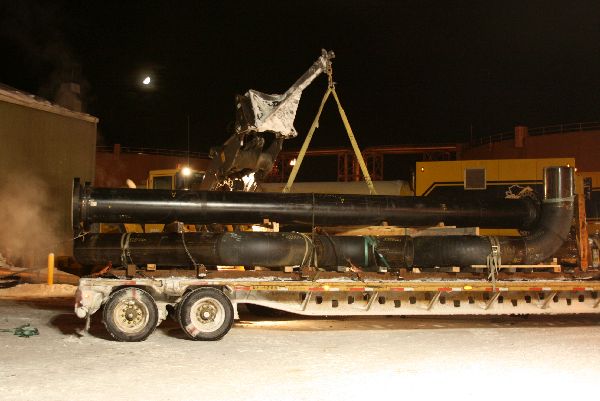
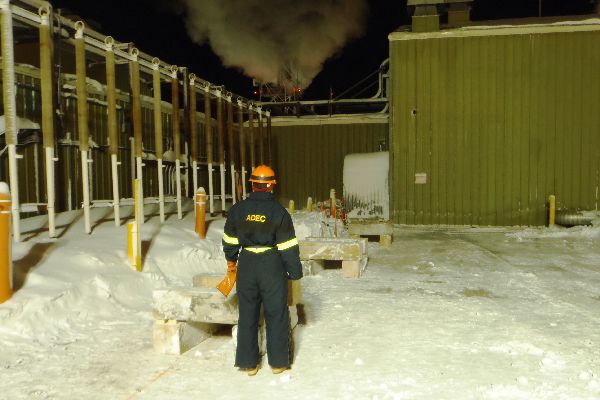

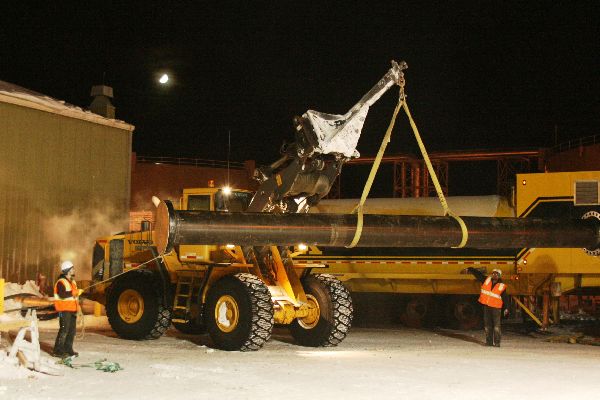
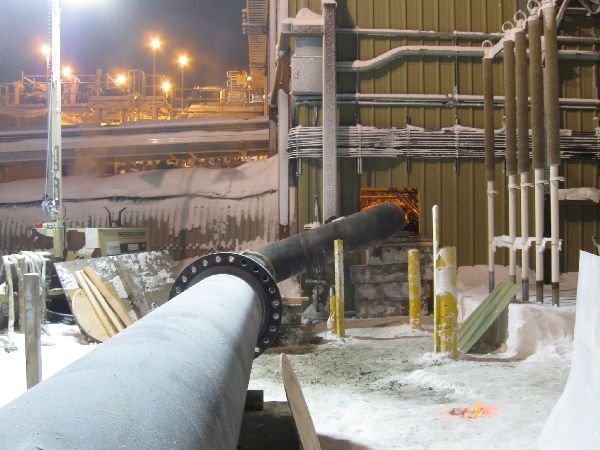
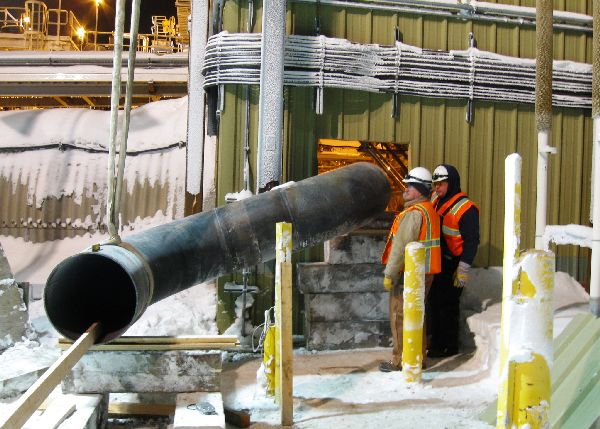
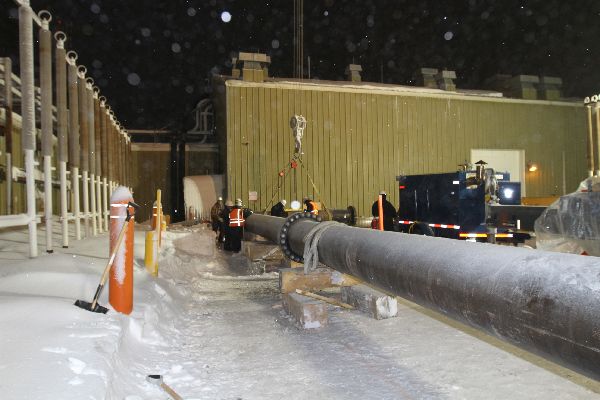
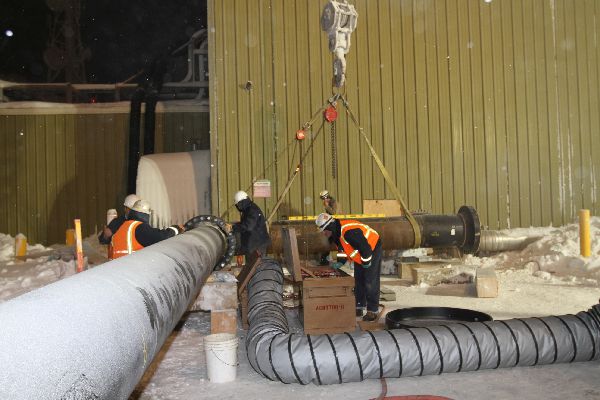
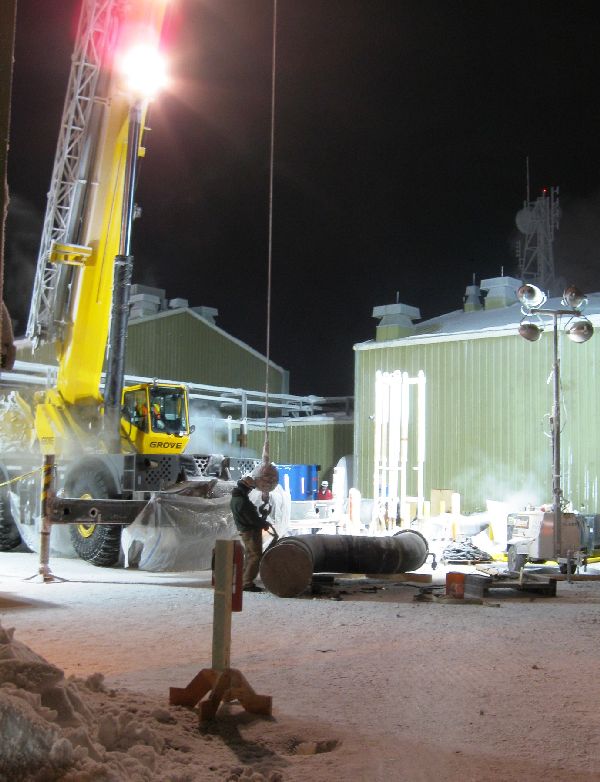
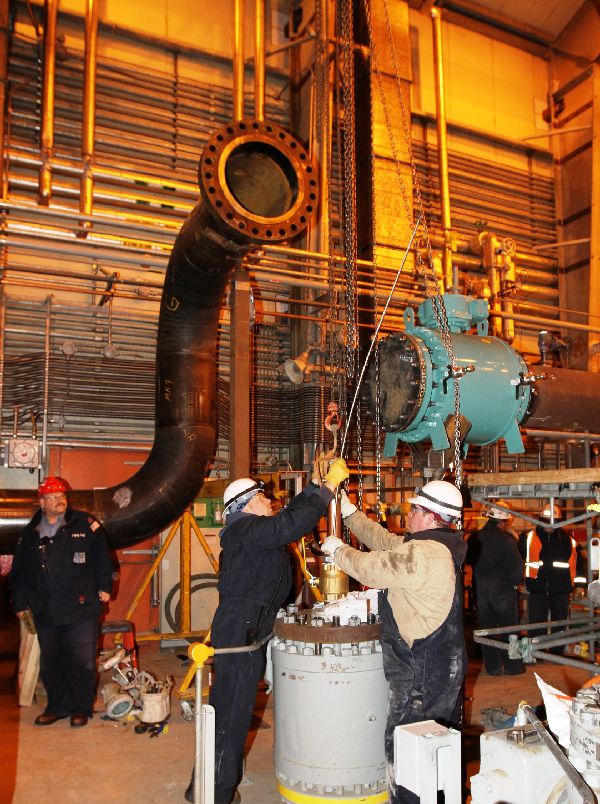
 Indicates an external site.
Indicates an external site.